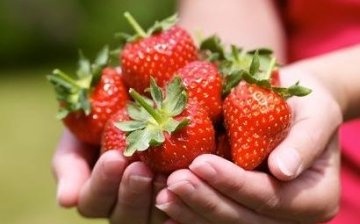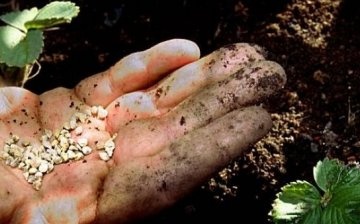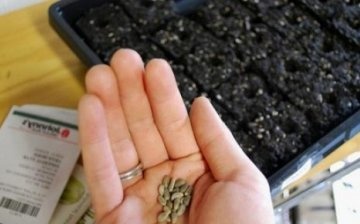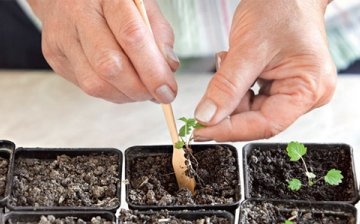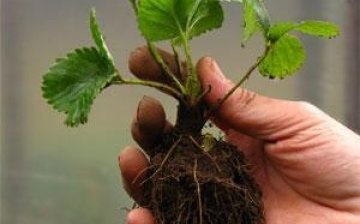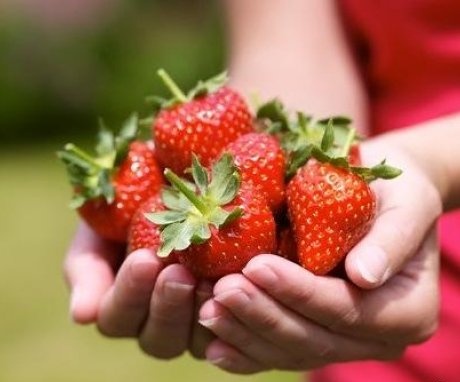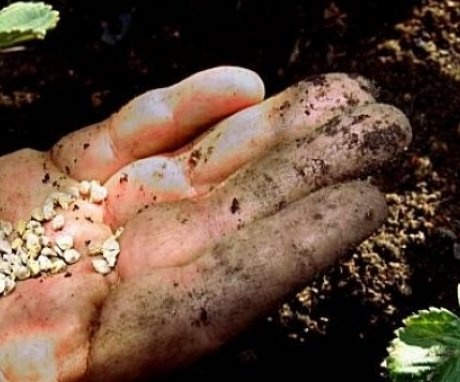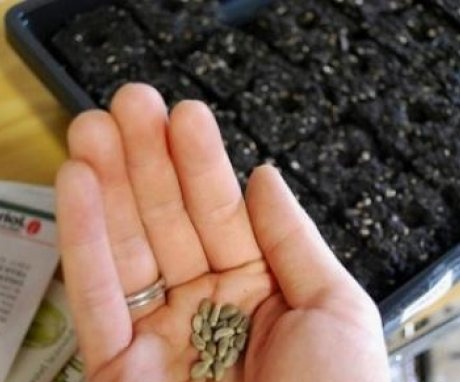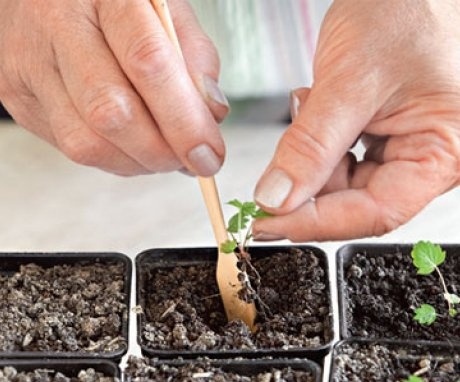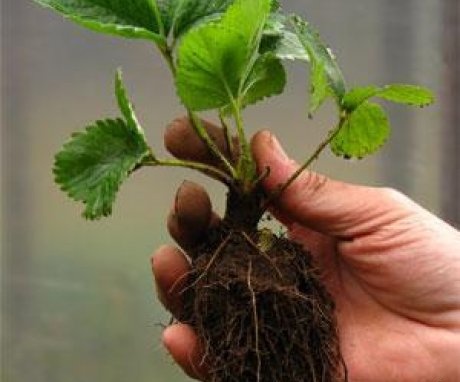Growing strawberries from seeds: theory and practice
Traditionally, everyone's favorite berries are propagated by rooting the antennae. With this method, all diseases of the mother bush will be transmitted to young plants. This problem will not arise if you grow strawberry seedlings from seeds.
Content:
- How to choose a good planting material?
- Soil, seeds, capacity: seedbed preparation
- Ways of planting strawberry seeds
- Dive seedlings
- How to prepare the plot and strawberries for planting?
How to choose a good planting material?
Seed propagation is not suitable for most industrial strawberries... New bushes produced by this method will have completely different characteristics.
The remontant types of berries will meet all expectations. Plants can grow in containers on a windowsill and bear fruit in winter.
It is more difficult, but also more entertaining, to propagate large-fruited bushes. The chances of success will increase if you choose planting material from well-known manufacturers.
The purchased seeds must have a sufficient shelf life margin, since their germination is completely lost in 2 years. In case of poor storage, raw materials will lose their properties after a year or even earlier.
Proven strawberry varieties for seed propagation:
- Bagota. The sweet, large berries ripen rather late.
- Gourmet. Early, fruitful look.
- Geneva. Forms large and sweet fruits.
- Mutofavorite. The mass of berries is from 100 to 150 g.
- Brighton. Until the very frost, you can feast on delicious dark red fruits.
- Sakhalin. Sweet strawberries are harvested from summer to late fall.
You can stock up on planting material on your own. To do this, take the largest, ripe berries from healthy bushes. Having cut off the top layer of pulp, gently rub the fruits on paper (fabric).
Seeds are carefully selected from completely dried strawberry mass. If you keep raw materials in glassware, they will keep their properties for 4 years.
For the successful cultivation of strawberries from seeds, the correct planting material is of paramount importance.
Soil, seeds, capacity: seedbed preparation
A mixture of sod land, sand and peat (1: 0.5: 0.5) is used as a substrate. Wood ash (10%) is added to ensure the health and strength of the young seedlings. Also, rotted manure or complex mineral fertilizers are introduced into the soil.
It is recommended to disinfect the soil: destroy eggs and insect larvae, weed seeds, harmful microorganisms. For this purpose, it is kept for 30 minutes in a water bath or calcined in an oven. After the "operation" the soil is allowed to rest for 3 weeks.
It is convenient to grow seedlings in silicone, plastic or wooden boxes.
If they are not there, plastic transparent containers, boxes, juice or kefir bags will do. It should be borne in mind that of all materials, plastic is least affected by fungus. Holes are made in the bottom of the containers through which excess moisture will flow out during watering. The dishes are diligently washed and disinfected with a concentrated solution of potassium permanganate.
You will also have to work on tightly similar strawberry seeds. Immediately before planting, they are soaked for 1-2 days in rain or melt water.The liquid is changed several times a day. The result is the dissolution of the inhibitors used to treat the purchased seeds, and the acceleration of germination. Some gardeners use growth stimulants for soaking. Planting material is kept for 2-3 days in a tissue soaked in them. The optimum temperature regime for swelling is 15-160C.
Stratification is a procedure designed to increase the immunity of raw materials, improve germination and germination.
Planting material is kept in a refrigerator in a humid environment for 30 days. It is important to prevent the seeds from drying out. The preparatory steps prior to sowing will ensure the speedy germination of seeds and the health of the seedlings.
Ways of planting strawberry seeds
There are no strict restrictions on the time of sowing crops in the ground. This is done in January and April. As practice shows, winter seedlings are the strongest.
Option 1 "From the refrigerator - straight to the soil". Sowing procedure:
- Fill the container with prepared soil.
- Seal it and moisten it with water from a spray bottle.
- Gently spread the seeds out using tweezers, a toothpick, or a pointed match.
- The raw material is not covered with earth, but simply pressed against it.
- Close the container with a lid and place in a warm, bright place, but not in direct sunlight. Dried seeds will not germinate.
Holes in the lid will provide sufficient air circulation. The container itself should not be opened for the first time: a warm microclimate is formed, condensation on the walls of the dishes "pours" the seeds.
Control the germination process by observing through the transparent cover. If it's dry, you need moisture. When there are too many drops on the shelter, the crops are ventilated.
Option 2 "Two in one: landing and stratification". Main steps:
- Pour wet soil into a container, leaving 2-3 cm to the upper edge.
- Lay snow on top, lightly pressing it.
- Place the soaked planting material.
- Close the lid.
- Leave in the refrigerator for 14 days.
- Slowly melting snow will pull the seeds under the soil a little. The moisture from it is just enough for 2 weeks.
It is still necessary to control the process, if necessary, arranging ventilation and watering. After 2 weeks, the container is taken out and the strawberries continue to germinate in the warmth.
Option 3 "Peat tablets":
- Means for growing seedlings are prepared by soaking them in a bowl of water. They will absorb liquid and swell. Water is added until the tablets no longer increase in volume.
- The seed is placed in the central cavity of the finished tablet. Do not sprinkle anything on top. If necessary, pour through the pallet.
Different methods of sowing strawberries allow you to experiment and find your favorite way to get young bushes.
Dive seedlings
With a successful planting and proper container maintenance, seedlings will appear in 3-5 weeks. All this time, it is important to monitor soil moisture. When shoots appear, they are provided with good lighting. The temperature is maintained at the level of 20-240C. When full-fledged bushes appear, the shelter from the container is removed for good.
Seedlings, which have formed 3 leaves, you need:
- Transfer to a separate bowl. Its optimal size is 5x5 cm. Pots made of peat and plastic, disposable cups are suitable.
- Holes must be made in the bottom of the container to prevent water stagnation. Small pebbles and nutshells are used as drainage.
- The soil used to fill the cups is moistened. In terms of composition, it is the same as for seeds, with one exception: the tree resin is replaced with complex fertilizers (2-3 g per 1 kg of substrate).
- Having made a small hole, strawberries are planted. You must act very carefully using a match or a toothpick.
Plants must not be buried too deep: the heart with leaves should be on the surface. It happens that the sprouts have time to acquire a root system and are closely intertwined with each other. You will have to carefully separate the seedlings with a fork, soaking the soil with water.
For the first time, it is better to hide the planted strawberries from direct sunlight. Further care of the plants is quite simple and consists in regular watering and loosening of the soil.
Picked strawberry will grow in containers until planting on the site. During this period, a branched rhizome is formed at the bush, the stems are compacted. The plant can also acquire peduncles, which will have to be mercilessly removed. The definition of seedlings in separate containers is the key to its active development before planting in open ground.
How to prepare the plot and strawberries for planting?
After waiting for the middle of June, you can start planting bushes for permanent residence. The seedlings need to be prepared for such an event. Since April, containers with strawberries are taken out into the fresh air. Do this during the day and only for 1-2 hours if the temperature is above 0С. When it gets warmer, the time spent outdoors is gradually increased.
Before planting, the bushes generally cease to be brought into the room.
Strawberries will do well in fertile, fairly loose soil. The soil can be enriched with humus or compost. In autumn, the area for seedlings is dug up to 30 cm in depth, and in the spring they are harrowed by 14 cm.
How to plant strawberry seedlings:
- For planting, choose the morning of a cloudy day.
- The holes are prepared keeping a distance of 15 cm.
- Distance between rows - 25 cm.
- It is important to choose the depth of the hole successfully: the root should be in the ground, and the leaves should be above it. Ignoring this rule will lead to the death of the plant.
An overly buried root will develop poorly, and close to the surface will dry out. The use of peat tablets greatly simplifies the process of transferring seedlings to the site.
They will successfully take root in the open field properly planted hardened bushes. The yield of a crop is not affected at all by the method of its cultivation. Strawberries obtained from seeds will begin to bear fruit in the second year.
More information can be found in the video.




